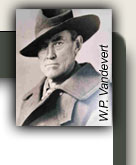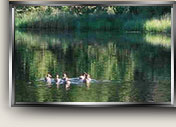Forestland Plans
This section recommends priorities for
forest management over the next ten years and discusses the status
and indicated work for each stand. The Vandevert Ranch Association has not officially adopted
these priorities or allocated the funds to execute them. The plan should be
adjusted as budgets and possible stresses on trees dictate.
Forestland Priorities
Recommended forest projects are listed below in
priority order.
1.
Remove diseased and insect-infested trees that are in prominent
locations or are so severely affected they are an imminent threat to
other trees.
2.
Complete the shaded fuel break with trees 14-15 feet apart in Stand
I east of South Century and north of Vandevert Road
3.
Complete the shaded fuel break (14-15 feet between trees) along the
western fence in Stand VII
4.
Cut bitterbrush in Stand III, especially near corner of Hashknife
and the South Access Road
5.
Selectively thin Stand III between South Century and the power line
6.
Thin the treed areas within the pasture (14-15 feet between trees)
7.
Thin Stand IV (between barn and river) with 10 foot distance between
trees
8.
Thin the balance of Stand V (south of pasture) to 10 feet between
trees
9.
Thin the balance of Stand VI (north of pasture) with 10 foot
distance between trees
10.
Plant 1,000 ponderosa seedlings each year (first priority is the
part of Stand III between the south access road and the power line.)
11. Mow
thinned areas every five years and re-thin after ten years
12.
(Optionally) Expand distance between trees to 14-15 feet where
previously thinned to 10 feet
Summary of Resources and Management
Recommendations by Stand
Stand I (East of South Century) –
Pre-commercial and light commercial thinning of this even-aged stand
were undertaken in March of 2008 to alleviate stand density and
protect the stand from insect attack and crown fires. Extreme care
had to be taken since the stand is adjacent to South Century Drive.
The result is an attractive stand of lodgepole that is more insect
resistant, provides a fuel break and should not require re-entry for
10 years.
Stand II (Immediately west of South Century,
north of Vandevert/Homestead Road) -This stand was pre-commercially thinned in 1998
and needs to be re-thinned to protect it from insect attack. Some
bitterbrush needs to be removed to help with fuels reduction. Since
this stand is so visible from Schoolhouse Road, extreme care must be
taken to retain the visual and noise buffers in place.
The portion of the stand adjacent to the schoolhouse could have
some thinning done and the end result would be an almost pure stand
of ponderosa.
Stand III (Immediately west of South
Century, south of Vandevert/Homestead Road, east of South Access
Road and Hashknife) - This is the best stand of timber on the
Ranch. The spacing is getting closer to ideal and the natural
selection from insects and age thinning out the mature lodgepoles is
leaving the more disease resistant and longer-lived ponderosa.
There is a nice young understory of naturally regenerated seedlings
and saplings for natural replacement. Some manual reforestation
should be done with ponderosa to supplement the natural reseeding in
some of the more open areas. The portion west of the south access
road was planted with containerized ponderosa stock in 2004. Five
year interval entries for pre-commercial thinning for species
selection, disease prevention and fuels reduction should maintain
this stand in very good order. Most of the bitterbrush should be
removed immediately. Rodent control needs to be maintained on the
newly planted seedlings for at least five years.
Stand IV (Between river and road to barn)
- This is a naturally regenerated stand of young lodgepole with a
few older lodgepole overstory trees. There are a few scattered
ponderosa. Dead fuels have been removed and inter-planting with
ponderosa containerized stock was done in 2004. Also in 2004, the
oxbow and wetter areas were planted with hardwood species that did
not survive. This stand is in need of pre-commercial thinning for
forest health and fire prevention.
Stand V (South of pasture/southwest corner
of ranch) - This is a naturally regenerated stand of lodgepole
with a few scattered ponderosa. After this stand was decimated by a
beetle attack in the early 80’s, salvage logging was done. The end
result was a poor stand of overstory lodgepole and thick lodgepole
reproduction. Thick dead fuels covered the ground. The overstory
was prone to windthrow. The dead fuels needed to be removed in
conjunction with an extensive pre-commercial thinning operation to
prevent disease, insect infestations and wildfire. The per-acre
cost to thin this stand and remove dead fuels is very high due to
the concentration of fuels and the number of stems per acre to be
removed. Pre-commercial operations were started on the western
perimeter in 2004 and the stand was much improved in 2007 through
the work done by the La Pine High School Forestry Program.
Stand VI (North of pasture) - This stand
is similar to stand number V but the acreage is larger. This is a
high priority area for fuels reduction considering the density of
Oregon Water Wonderland development adjacent to the ranch and the
prevailing winds coming from the direction of OWW during fire
season. Some pre-commercial thinning and fuels reduction was
accomplished in 2004. In 2007 the La Pine High School Forestry
program began development of a 200 foot wide shaded fuel break along
the ranch border. The LPHSF program is expected to complete the
portion of the fuel break within Stand VI in 2008.
Stand VII (West of Hashknife Road) -
This is a naturally regenerated multi-aged, two story stand of
predominately lodgepoles with a few scattered ponderosa. Prevailing
winds and adjacent structure density make this area high priority
for fuels reduction. There is heavy rodent damage from both
porcupines and grey squirrels. The dead fuels have been removed and
the first phase of pre-commercial thinning has been done on most of
the stand. Some bitterbrush has been removed. The first priority
should be to develop a shaded fuel break between the fire road and
the western ranch border. Hopefully some of this will be
accomplished by the La Pine High School Forestry program in 2008.
More pre-commercial thinning, light commercial thinning and brush
removal should be done soon throughout the stand to improve forest
health and help protect the stand from insect invasions and
wildfire.
Continue to Riparian Area Description and History
Return to
Stewardship Plan Table of Contents |






